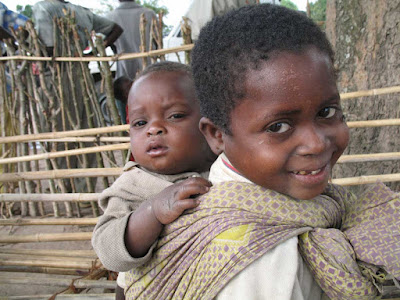Vaccination campaigns in the Congo are traditionally supported by the big NGO’s and UN offices. The vaccines are donated by UNICEF and significant sums are provided to the Ministry of Health to carry out the campaign. Unfortunately, most campaigns in DRC see their funds deviated towards a few, deep, pockets. Children in rural, less accessible areas miss all the routine immunizations. Here in Shamwana, the coverage has been at best episodic for the last decade. Hence the epicentres of measles shaking up here and there. But the Ministry of Health is often reluctant to start emergency vaccinations because it would implicitly suggest that its previous, well-funded campaigns, were not effective.
When the first cases of measles happened a month ago, we started vaccinating in the affected villages, according to our MSF protocols, using the Ministry’s vaccines. In the context of an epidemic, MSF widens the age of immunization up to 15 years whereas the routine government vaccination is only until 18 months old. We made the mistake to inform our Lubumbashi office about our extended coverage right away. Because they were trying to get provincial Ministry of Health approval for our extended emergency campaign, everything had to come to a halt to show the goodwill of MSF to cooperate with the Ministry. We were told to stop all vaccinations at once. The negotiations on our side, in the field, with the local Médecins Chefs de Zone, were successful – it helped that both came by motorbike and saw the extent of the measles epidemic, with the extra tents and set-up already overwhelmed. But at the higher capital level, where the MSF Lubumbashi people were also lobbying, the approval for the emergency coverage was not obtained. Instead, we were instructed by the Médecin d’Inspection Provinciale not to do an emergency extended campaign, because the International Rescue Committee was to support another provincial Campagne de Rattrapage in January, with the associated funds. With, I mumble, the expectation to be as ineffective as the last one. So even if we have the approval of our local Bureau Central de Zone, they were forced to bend to the capricious decision of the provincial authorities.
Simply put, 4600 doses of unused vaccines from the previous mass routine campaign held in August are now sitting in our fridge in Shamwana and waiting for their expiry date. In the meantime, we have had 164 cases of measles in six different villages, and new cases keep on coming on a daily basis. To say the least, out here in the field, we are... rabid. Had we not informed the MSF capital office so swiftly initially, and simply gone through our regular channels through the Bureau Central, there might have been a window whereby we could still have gone forward with the extended vaccination. Because the local MoH was in agreement with us; and with the Congolese context of delays in communication and habits of long political discussions, the provincial level might have been informed much later, thus giving us a window of opportunity. Our Bureau Central people now think that the carpet was pulled from under their feet because of the prompt intrusion of the provincial authorities inadvertently facilitated by our Lubumbashi MSF office. Moreover, to vaccinate the measles-affected villages is feasible here with the current logistical equipment. The provincial Ministry of Health in Lubumbashi is de facto taking the children hostages by refusing to authorize our emergency vaccination, which does not cost anything. All this because it does not bring any supplementary funds to his office – I mean pockets, of course... We have to watch helplessly the measles spread and use up material and human resources, all the while knowing that the epidemic was altogether avoidable. The principle of international aid can be a pretty mask hiding an ugly reality when there is not much follow-up in the field. One must take into account the corrupted, tribal, ego-driven political infrastructures that are rampant on this continent. Ah, the arcaneness of dealing with Congolese officials and African realities! The road to hell is certainly paved with good intentions...
I now know next time to play dumb and to take advantage of the slowness of bicycle-driven messages used by the Ministry of Health to communicate with its hierarchy. We are all having fantasies of hiding in the night to go secretly vaccinate all these villages against measles. Historically, MSF had been known to defy Ministry of Health decisions or inertia, but there have been consequences. MoH’s have been known to denounce MSF on public radio, or even, we have been kicked out of some countries. With more experience and chaos in the humanitarian world, we are aiming for a better collaboration with the local medical authorities, but it can be a delicate issue that is difficult to take on.
* * *
Parading on AIDS day in Shamwana on December 1st...

My absolutely fantastic medical team

* * *
Sur ce, j’aimerais quand même tous vous souhaiter une bonne saison des Fêtes et une bonne année 2008! Que la joie et la paix soient dans votre coeur et que le nouvel an vous amène tous les souhaits auxquels vous aspirez!
Best wishes of health, warmth, luck, happiness and love for the holiday season! May 2008 bring you joy and fulfillment!




































